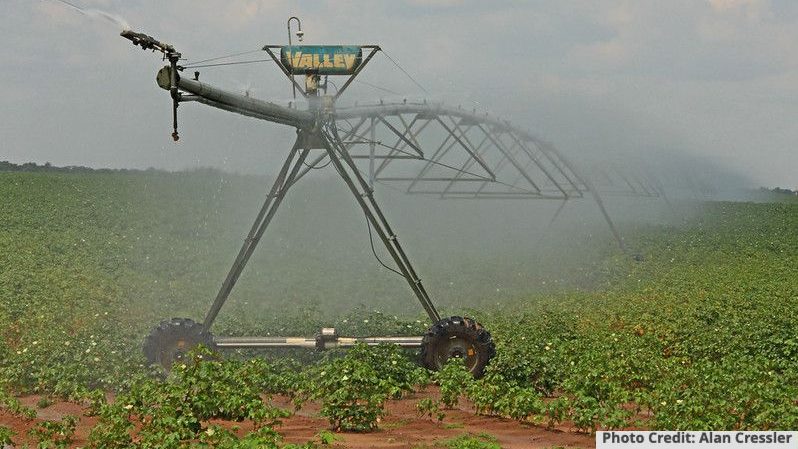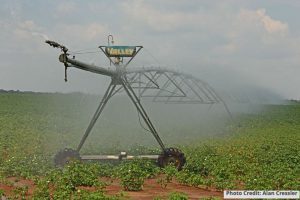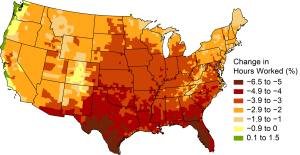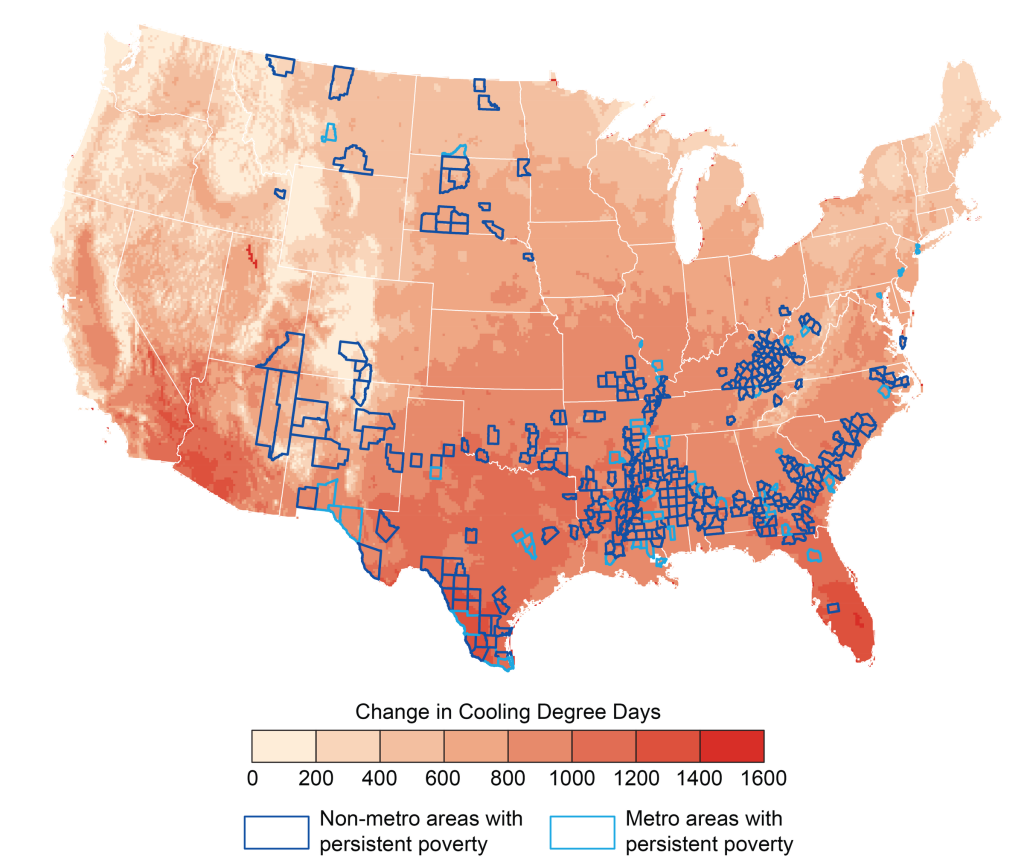A Guide to Understanding Economic and Health Risks for Rural Communities in the Southeast

A Guide to Understanding
Economic and Health Risks for Rural Communities
in the Southeast
NCA4 Webinar Series – Key Message 4
Fourth National Climate Assessment (NCA4) Webinar Series
Below is a brief overview of this week’s webinar topic – Key Message 4: Economic and Health Risks for Rural Communities.
Wednesday, January 15, 202o, 12 pm ET
Presented by Dr. Kirstin Dow (USC/CISA)
Key Message 4: Economic and Health Risks for Rural Communities
“Rural communities are integral to the Southeast’s cultural heritage and to the strong agricultural and forest products industries across the region. More frequent extreme heat episodes and changing seasonal climates are projected to increase exposure-linked health impacts and economic vulnerabilities in the agricultural, timber, and manufacturing sectors (very likely, high confidence). By the end of the century, over one-half billion labor hours could be lost from extreme heat-related impacts (likely, medium confidence). Such changes would negatively impact the region’s labor-intensive agricultural industry and compound existing social stresses in rural areas related to limited local community capabilities and associated with rural demography, occupations, earnings, literacy, and poverty incidence (very likely, high confidence). Reduction of existing stresses can increase resilience (very likely, high confidence).”
 56% of land in the Southeast is rural, or nonmetropolitan, and 16 million people live in these areas. Many residents of rural communities maintain a connection to traditional livelihoods, relying on the natural resources found in the region which are inherently vulnerable to climate change. Rural economic sectors, such as agriculture and forestry have already been impacted by climate change due to extreme temperatures and drought and this trend is projected to continue, further impacting human health and labor productivity. While adaptation and mitigation measures can moderate climate change impacts, rural areas generally face additional limitations, such as poverty and limited access to healthcare, which will make coping to climate-related challenges more difficult.
56% of land in the Southeast is rural, or nonmetropolitan, and 16 million people live in these areas. Many residents of rural communities maintain a connection to traditional livelihoods, relying on the natural resources found in the region which are inherently vulnerable to climate change. Rural economic sectors, such as agriculture and forestry have already been impacted by climate change due to extreme temperatures and drought and this trend is projected to continue, further impacting human health and labor productivity. While adaptation and mitigation measures can moderate climate change impacts, rural areas generally face additional limitations, such as poverty and limited access to healthcare, which will make coping to climate-related challenges more difficult.– NCA4. Ch. 10: Agriculture and Rural Communities
– NCA4, Ch. 6: Forests
Mountain Ramps
 Although ramps are found all along the Appalachian mountain range, on Cherokee ancestral lands, they are already in their southernmost range. Climate change thus acts to increase the vulnerability of this plant to the existing stressors.
Although ramps are found all along the Appalachian mountain range, on Cherokee ancestral lands, they are already in their southernmost range. Climate change thus acts to increase the vulnerability of this plant to the existing stressors.Figure 19.20: This up-close image of a ramp (Allium tricoccum), harvested from the wild, shows leaves and the bulb/corm of the plant.
Photo credit: Gary Kaufman, USDA Forest Service Southern Research Station.
(Link to Figure 19.20 | Downloadable PDF)
Figure 19.21 Projected Changes in Hours Worked
 This map shows the estimated percent change in hours worked in 2090 under a higher scenario (RCP8.5). Projections indicate an annual average of 570 million labor hours lost per year in the Southeast by 2090 (with models ranging from 340 million to 820 million labor hours). Estimates represent a change in hours worked as compared to a 2003 & 2007 average baseline for high-risk industries only. These industries are defined as agriculture, forestry, and fishing; hunting, mining, and construction; manufacturing, transportation, and utilities.
This map shows the estimated percent change in hours worked in 2090 under a higher scenario (RCP8.5). Projections indicate an annual average of 570 million labor hours lost per year in the Southeast by 2090 (with models ranging from 340 million to 820 million labor hours). Estimates represent a change in hours worked as compared to a 2003 & 2007 average baseline for high-risk industries only. These industries are defined as agriculture, forestry, and fishing; hunting, mining, and construction; manufacturing, transportation, and utilities.
Source: adapted from EPA 2017. (Link to Figure 19.21 | Downloadable PDF)
Figure 19.22: Projected Changes in Cooling Degree Days
 The map shows projected changes in cooling degree days by the mid-21st century (2036–2065) under the higher scenario (RCP8.5) based on model simulations. Rural counties experiencing persistent poverty are concentrated in the Southeast, where the need for additional cooling is expected to increase at higher rates than other areas of the country by mid-century.
The map shows projected changes in cooling degree days by the mid-21st century (2036–2065) under the higher scenario (RCP8.5) based on model simulations. Rural counties experiencing persistent poverty are concentrated in the Southeast, where the need for additional cooling is expected to increase at higher rates than other areas of the country by mid-century.
Sources: NOAA NCEI, CICS-NC, and ERT, Inc. (Link to Figure 19.22 | Downloadable PDF)
Additional Case Studies from the U.S. Climate Resilience Toolkit:
– Case Study: Water Recycling in Clayton County, Georgia
– Case Study: Climate Outlooks Increase Farmer’s Odds for Success
Evidence, Likelihood, and Confidence for Key Message 4
Evidence of impacts to the Southeast are supported by the geography of the region, which contains a large number of cities located at or below sea level at an increased risk of flooding. Additionally, the natural climate of the Southeast provides a conducive atmosphere for health issues including the spread of disease. Uncertainties include population projections, shifts in immigration or migration rates, and shifting demographics. See more.
SE CASC Publications Related to this Key Message from the SE CASC Publications Database Include:
- Sea level rise impacts on rural coastal social-ecological systems and the implications for decision making (2018)
- Rural coastal community resilience: Assessing a framework in eastern North Carolina (2018)
- Uncertainty Quantification and Propagation for Projections of Extremes in Monthly Area Burned Under Climate Change (2016)
- Framing climate change communication to prompt individual and collective action among adolescents from agricultural communities (2016)
- Observed and Modeled Twentieth-Century Spatial and Temporal Patterns of Selected Agro-Climate Indices in North America (2012)
SE CASC funding and researchers have implemented projects relevant to this Key Message:
- Southeast Regional Assessment Project (SERAP): Assessing Global Change Impacts on Natural and Human Systems in the Southeast. Project Details.
- Assessment of Water Availability and Streamflow Characteristics in the Southeastern U.S. for Current and Future Climatic and Landscape Conditions. Project Details.
- Improving Scenarios of Future Patterns of Urbanization, Climate Adaptation, and Landscape Change in the Southeast. Project Details.
View a Guide to Understanding the Southeast Chapter of the NCA4
- Categories:
